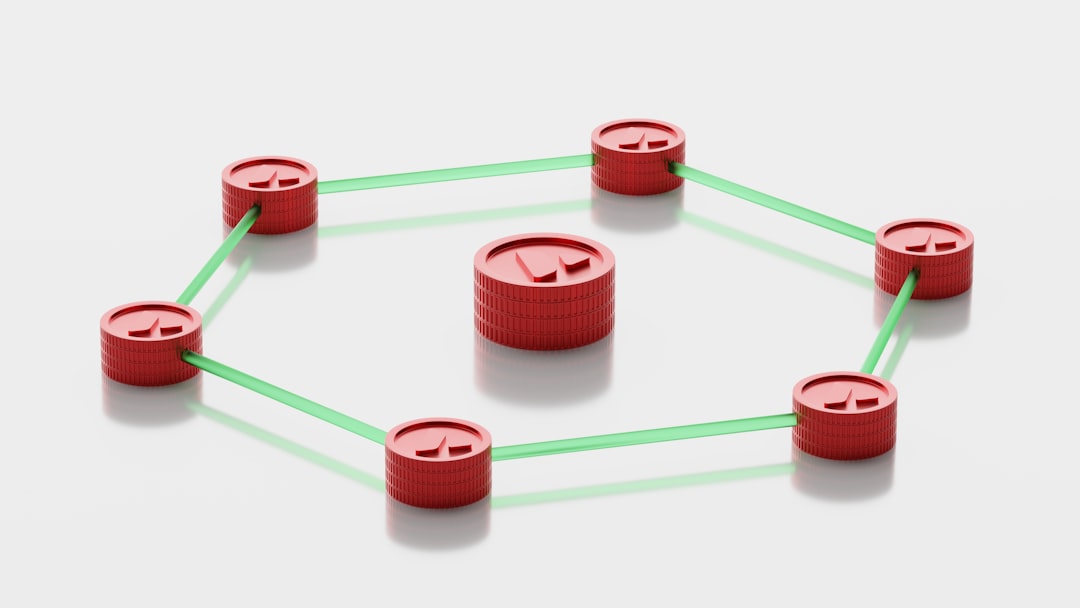Mastering Remote Work Productivity for Digital Nomads and Freelancers

Introduction
Remote work has moved from a niche perk to a mainstream way of life for millions of professionals around the world. For digital nomads and freelancers, the freedom to choose where and when to work is both a blessing and a challenge. Without a traditional office structure, the responsibility for maintaining productivity falls entirely on the individual. This article explores the habits, tools, and strategies that enable remote workers to stay focused, deliver high‑quality results, and enjoy a sustainable lifestyle while traveling or working from any corner of the globe.
Understanding the Remote Work Landscape
Remote work is not a monolith. It includes full‑time employees of distributed companies, freelancers juggling multiple clients, and location‑independent entrepreneurs building their own brands. Each of these roles faces unique pressures:
- Freelancers must manage client acquisition, invoicing, and variable income streams while delivering projects on time.
- Digital nomads often contend with time‑zone differences, unreliable internet, and the temptation to explore new destinations instead of working.
- Remote employees may experience “always‑on” expectations from managers and teammates across the world.
Recognising where you fit in this spectrum helps you tailor productivity methods that align with your specific responsibilities and lifestyle preferences.
Cultivating the Right Mindset
Productivity begins in the mind. The freedom that remote work offers can easily become a source of anxiety if you lack clear mental boundaries. Two complementary mindsets are essential:
Ownership
Treat every task as if it were part of a traditional office role. Set personal deadlines, hold yourself accountable, and celebrate completed milestones. When you view yourself as the driver of your success, you are more likely to proactively address obstacles.
Flexibility
While ownership promotes discipline, flexibility allows you to adapt to changing circumstances. A beachside café may provide the perfect backdrop for creative brainstorming, while a coworking space might be better for deep focus. Embrace the ability to switch environments, but do so with intention rather than whim.
Designing a Personal Productivity System
A productivity system is a collection of habits, tools, and routines that together keep you moving forward. Below is a step‑by‑step framework you can customise to your workflow.
Define Core Goals
Start by articulating three to five high‑level goals for the month. These should be a mix of client deliverables, business development tasks, and personal growth objectives. Write them down in a visible place – a digital note, a physical notebook, or a wall board.
Break Goals into Weekly Milestones
For each core goal, identify the key outcomes you need to achieve within the week. This process turns vague aspirations into concrete actions. For example, if a goal is “launch a new portfolio website,” a weekly milestone could be “finalise site wireframe and select a hosting provider.”
Create Daily Task Lists
Every evening, review your weekly milestones and extract the specific tasks you will complete the next day. Prioritise using the “must‑do, should‑do, could‑do” approach. Limit the daily list to a realistic number of items – typically six to eight – to avoid overload.
Review and Reflect
At the end of each day, spend five minutes ticking off completed tasks, noting any blockers, and adjusting the next day’s list accordingly. Conduct a deeper weekly review on Sunday evening: assess progress toward milestones, celebrate wins, and identify patterns that need correction.
Mastering Time Management
Time is the most valuable resource for remote workers. Efficient allocation of hours can dramatically increase output while preserving personal time for travel and leisure.
The Power of Time Blocking
Allocate distinct blocks of time on your calendar for specific types of work. For instance, reserve 9 am–12 pm for deep work, 1 pm–3 pm for client meetings, and 4 pm–5 pm for administrative tasks. Treat each block as an immutable appointment. When a new request arrives, assess whether it fits an existing block or requires reshuffling.
Pomodoro Technique for Focus
Break each deep‑work block into 25‑minute intervals followed by a five‑minute break. After four intervals, take a longer break of 15‑30 minutes. This rhythm trains the brain to maintain concentration while preventing burnout. Use a simple timer app or a browser extension to automate the cycles.
Managing Time‑Zone Overlap
When collaborating with teams in different regions, identify a “core overlap window” of two to three hours where everyone is available. Schedule all real‑time meetings within this window and reserve the remaining hours for independent work. Communicate your preferred overlap times clearly in your email signature or project management profile.
Guarding Against Over‑Commitment
Freelancers often feel pressure to accept every opportunity. Use a simple formula to evaluate new projects: Estimated Revenue – (Estimated Hours × Desired Hourly Rate) = Net Value. If the net value is below a threshold you set for yourself, politely decline. This protects both your income and your schedule.
Choosing the Right Tools
Technology can either simplify or complicate remote work. Below is a curated set of tools grouped by function. You do not need to adopt every tool; pick the ones that align with your workflow.
Communication
- Slack – real‑time messaging with channel organization. Ideal for quick questions and team updates.
- Zoom – reliable video conferencing for client calls and presentations.
- Loom – record short video messages to explain complex concepts without scheduling a live meeting.
Project Management
- Trello – visual kanban boards for simple task tracking.
- Asana – advanced workflow features for larger projects and multiple collaborators.
- ClickUp – an all‑in‑one platform that combines tasks, docs, goals, and time tracking.
Time Tracking & Invoicing
- Toggle – lightweight timer with reporting features.
- Harvest – integrates time tracking with invoicing and expense management.
- PayPal / Stripe – reliable payment gateways for freelance invoicing.
File Storage & Collaboration
- Google Drive – cloud storage with real‑time document editing.
- Dropbox – robust file sync for larger media assets.
- Notion – flexible workspace for note‑taking, knowledge bases, and project planning.
Distraction Management
- Freedom – blocks distracting websites across devices.
- Cold Turkey – schedules focus periods and locks you out of selected apps.
- Forest – gamified timer that encourages staying off the phone.
Creating an Ergonomic Mobile Workspace
Your physical environment strongly influences mental focus. Even when you move frequently, you can establish a portable ergonomic setup that supports long hours of work.
Invest in a Good Laptop Stand
A stand elevates the screen to eye level, reducing neck strain. Look for a lightweight, foldable model that fits in a backpack.
Use an External Keyboard
A compact mechanical or membrane keyboard improves typing speed and reduces wrist fatigue. Pair it with a Bluetooth mouse for a more natural hand position.
Manage Lighting
Natural light is ideal, but it can cause glare on the screen. Position your workspace near a window with indirect light, and keep a small LED lamp for evenings or cloudy days.
Carry a Portable Power Bank
Unreliable outlets are common in cafés and co‑working spaces. A high‑capacity power bank with USB‑C output ensures your laptop stays charged during long sessions.
Managing Distractions and Staying Focused
Remote work offers abundant sources of distraction: social media, travel planning, local attractions, and the ever‑present ping of notifications. Implementing disciplined strategies helps you stay on track.
Set Clear Boundaries with Others
If you share a living space with a partner, roommate, or family, communicate your work schedule and request uninterrupted periods. Use visual cues such as a “Do Not Disturb” sign or headphones to signal focus time.
Implement a “Digital Sunset”
Designate a time each evening—typically one hour before bedtime—when you turn off all work‑related devices. This practice improves sleep quality and creates a mental separation between work and personal life.
Batch Similar Tasks
Group repetitive tasks like email checking, social media posting, and invoicing into dedicated time blocks. This reduces context‑switching costs and frees larger blocks for deep work.
Use the Two‑Minute Rule
If a task can be completed in two minutes or less, do it immediately. This prevents small items from accumulating and cluttering your to‑do list.
Prioritising Health and Well‑Being
Sustained productivity hinges on physical and mental health. Remote workers often neglect self‑care because the line between work and leisure blurs.
Exercise Regularly
Incorporate movement into your daily routine. Short body‑weight circuits, yoga sessions, or a brisk walk around the neighbourhood can boost energy and focus. Many nomads use local parks or hotel gyms to stay active.
Maintain a Balanced Diet
Relying on coffee and fast food hampers concentration. Stock portable healthy snacks like nuts, fruit, and protein bars. When possible, cook simple meals using fresh ingredients from local markets.
Practice Mindfulness
A five‑minute meditation practice each morning can centre the mind and reduce stress. Apps like Insight Timer or Headspace provide guided sessions suitable for beginners.
Get Adequate Sleep
Aim for seven to eight hours of sleep per night. Use blackout curtains or a sleep mask in bright environments, and keep a consistent bedtime routine even when traveling across time zones.
Continuous Skill Development
The remote work economy evolves rapidly. To stay competitive, digital nomads and freelancers must invest in ongoing learning.
Identify Skill Gaps
Review the requirements of your ideal clients or the services you wish to offer. List the competencies you lack or need to improve, such as advanced SEO, motion graphics, or a new programming language.
Leverage Online Learning Platforms
Websites like Coursera, Udemy, LinkedIn Learning, and Skillshare host thousands of courses. Choose those with high ratings, practical assignments, and industry‑recognized certificates.
Apply Learning Immediately
After completing a module, create a small project that uses the new skill. Real‑world application reinforces knowledge and builds a portfolio piece you can showcase to clients.
Join Peer Learning Groups
Participate in virtual study circles, Slack communities, or local meetups focused on your niche. Teaching concepts to others deepens your own understanding and expands your professional network.
Building a Supportive Community
Isolation is a common pitfall for remote workers. Cultivating connections mitigates loneliness and opens doors to collaborations.
Attend Co‑Working Spaces
Even if you prefer to work from cafés, a weekly visit to a co‑working hub introduces you to like‑minded professionals. Many spaces host networking events, workshops, and social gatherings.
Engage on Professional Platforms
Maintain an active LinkedIn profile, contribute to industry forums, and share insights on Twitter or Medium. Regular interaction builds credibility and attracts potential clients.
Find an Accountability Partner
Pair up with another freelancer or digital nomad who shares similar goals. Schedule weekly check‑ins to discuss progress, challenges, and next steps. Mutual accountability boosts motivation.
Participate in Virtual Conferences
Online conferences provide access to thought leaders, new tools, and industry trends without the need for travel. Take notes, ask questions, and follow up with speakers or attendees you find inspiring.
Scaling Your Remote Business
Once you have mastered day‑to‑day productivity, you may consider scaling your operations—whether by raising rates, expanding services, or building a small team.
Refine Your Value Proposition
Clarify what sets you apart from competitors. Focus on outcomes you deliver, such as “increase website conversion rates by 30 %” rather than generic service descriptions.
Implement Tiered Pricing
Offer packages that cater to different client budgets. A basic tier might include essential deliverables, while premium tiers add strategy sessions, ongoing support, and faster turnaround times.
Outsource Non‑Core Tasks
Delegate repetitive or administrative work—like bookkeeping, graphic design, or copyediting—to trusted freelancers. This frees up your time for high‑value activities and client work.
Automate Repetitive Processes
Use tools like Zapier or Make (formerly Integromat) to connect apps and automate workflows. For example, automatically create a new Trello card when a client fills out a project brief form.
Overcoming Common Remote Work Challenges
Even seasoned remote workers encounter obstacles. Below are strategies for tackling frequent issues.
Internet Instability
- Carry a portable hotspot device with a local SIM card.
- Identify backup cafés or coworking spaces with reliable Wi‑Fi.
- Download essential files for offline work before leaving a stable connection.
Loneliness and Burnout
- Schedule regular video calls with friends or family.
- Take “digital detox” days where you explore your surroundings without screens.
- Set realistic workload limits and honour vacation days.
Scope Creep
- Define project scope in a written agreement before starting work.
- Use a change‑order process for additional requests, specifying extra cost and timeline.
- Communicate clearly about what is included in the original quote.
Time‑Zone Fatigue
- Rotate meeting times when possible to share the inconvenience across team members.
- Consolidate all live meetings into a single day to protect the rest of the week for focused work.
- Use asynchronous communication tools like Loom or recorded presentations.
Measuring Success and Iterating
Productivity is not a static achievement; it requires continuous measurement and adjustment.
Key Performance Indicators (KPIs)
Identify metrics that reflect both business health and personal efficiency, such as:
- Billable hours per week
- Project completion rate on schedule
- Client satisfaction scores (e.g., Net Promoter Score)
- Revenue growth month over month
Track these KPIs in a simple spreadsheet or dashboard. Review them monthly to spot trends.
Conduct Quarterly Audits
Every three months, evaluate your productivity system:
- Which habits are delivering results?
- Which tools are underutilised or causing friction?
- Are your work hours aligning with your lifestyle goals?
Based on the audit, tweak routines, adopt new tools, or eliminate ineffective practices.
Celebrate Wins
Acknowledge milestones, big or small. Whether you landed a new client, finished a challenging project, or maintained a streak of focused workdays, taking time to celebrate reinforces positive behaviour.
Conclusion
Mastering remote work productivity is a blend of mindset, structured routines, smart tool selection, and ongoing self‑care. Digital nomads and freelancers who invest in these areas can turn the flexibility of location independence into a competitive advantage. By defining clear goals, protecting focus time, building supportive networks, and continuously sharpening skills, you create a sustainable workflow that thrives no matter where you set up your laptop. The journey is iterative—each experiment, success, and setback refines the system that powers your professional freedom. Embrace the process, stay adaptable, and let your productivity become the foundation for a rewarding remote career.
Random Posts

Essential Tools for High Performance Remote Work
Discover the must have tools that turn remote work into high performance, from messaging and video to project management, security and productivity, with tips to integrate them smoothly into any workflow.
4 days ago

Finding Freedom Affordable Nations Offering Digital Nomad Visas
Discover budget-friendly countries that offer digital nomad visas, letting you work remotely while enjoying low living costs, tax perks, and easy residency options.
2 months ago

Unlocking Global Productivity Through Remote Coworking Hubs
Remote coworking hubs turn cities into productivity hotspots, giving digital nomads and distributed teams high speed internet, inspiring design, and vibrant networks that power global collaboration.
4 weeks ago

Top Apps Every Nomad Needs for Seamless Remote Work
Discover the must-have apps that keep nomads connected: Slack for organized team chat and integrations, Microsoft Teams for unified messaging, video and Office collaboration, plus essential tools for reliable remote work.
2 months ago

How Much Does Bali Really Cost for Remote Workers
Discover the real monthly cost of living in Bali as a remote worker, from affordable housing and coworking fees to hidden expenses, so you can budget confidently and choose the right spot for work and life
2 months ago
Latest Posts

Essential Software Every Remote Professional Should Use
Master remote work with essential tools: instant messaging like Slack, high definition video calls such as Zoom, and asynchronous voice apps. Streamline communication, stay connected and boost productivity.
1 day ago

Tech‑Friendly European Towns Perfect for Remote Living
Discover Europe’s best small towns where fast internet, affordable living and vibrant tech communities let you work remotely while soaking up historic charm, lakeside views or mountain air.
1 day ago

Curated Collections of Apps and Media for the Travel‑First Lifestyle
Discover the essential apps, books, podcasts and tools that empower digital nomads and remote workers to stay connected, manage money, find safe stays, stay healthy and productive while traveling.
1 day ago